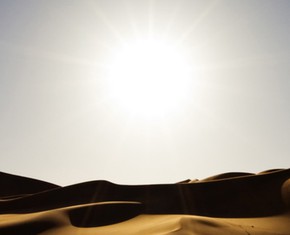The views expressed in our content reflect individual perspectives and do not represent the authoritative views of the Baha'i Faith.
Every Faith celebrates the birth of its founder with great joy—but the Baha’is around the world double that joy when they observe the Twin Holy Days.
Baha’is celebrate the births of both the Bab and Baha’u’llah, the two prophets associated with the Baha’i revelation, in quick succession—one right after the other.
RELATED: The Bab and Baha’u’llah: Two Divine Messengers
Who was the Bab? Baha’is believe that the Bab, whose title means “the gate,” opened the way for the advent of a new age of fulfillment and maturation for all humanity. The Bab’s primary mission—to herald the arrival of a divinely-inspired spiritual educator he referred to as “He Whom God shall make manifest”—would pave the way for the coming of a new messenger of God. Like John the Baptist, the Bab instructed his hopeful followers to prepare for the appearance of that new prophet. He also announced the coming of a new era in human history, one that would witness the emergence of a just, unified, peaceful world civilization. The Bab’s revelation, which lasted only six years until his execution by a fearful government, nevertheless paved the way for the coming of Baha’u’llah.
RELATED: The Bab’s Influence on Baha’i Life Today
Baha’is call these Holy Days “twins” because, according to the Muslim calendar in use when the Bab and Baha’u’llah were born, their birthdays fall on successive days—the Bab’s birthday on the first day of the month of Muharram and Baha’u’llah’s birthday on the second day of that same month, respectively.
These double holy days—when Baha’is gather to pray, read from the Baha’i writings, sing and dance and celebrate—hold enormous joy and meaning for Baha’is all over the world.
In his Most Holy Book, Baha’u’llah wrote:
All Feasts have attained their consummation in the two Most Great Festivals, and in the two other Festivals that fall on the twin days… Thus hath it been decreed by Him Who is the Ordainer, the Omnisicient.
Baha’u’llah asked the Baha’is to celebrate feasts of unity, joy and commemoration on each of these two special days, which makes them second only in importance in the Baha’i calendar to the two “Most Great Festivals”—which commemorate the Declaration of Baha’u’llah in the garden of Ridvan in 1863 and the Declaration of the Bab in Shiraz in 1844.
That means Baha’is observe two major holiday seasons during each year, one in the spring and the other in the fall. For those who live in the world’s Northern Hemisphere, the declarations of Baha’u’llah and the Bab occur during springtime, in April and May. For those who live in the Southern Hemisphere, the birthdays of the Bab and Baha’u’llah occur in the spring, during October or November. Symbolically, then, these holy days represent a true first—the very first time the entire planet has had the opportunity to join together in unity and commemorate its holiest days as the world renews itself.
Why the Twin Holy Days Change Dates Each Year
Middle Eastern Baha’is have traditionally observed the Twin Holy Days in accordance with the Muslim lunar calendar, and celebrated them together on consecutive days, counting them as one two-day festival. Baha’u’llah himself observed them this way.
In that lunar Muslim calendar, however, the Twin Holy Days occur on different days every year, because each new month begins with the appearance of a new moon, rather than on a fixed solar calendar date. In relationship to that 365-day solar calendar, the Muslim calendar “loses” about eleven days every year—since twelve lunar cycles amount to approximately 354 days, which falls short of a full solar cycle.
Baha’u’llah was born two years before the Bab. In the Western solar calendar, their birthdays fall about three weeks apart. That means Baha’u’llah’s birthday (2 Muharram of the year 1233 A.H.)—fell on 12 November 1817 A.D., while the Bab’s birthday (1 Muharram of 1235 A.H.)—fell on 20 October 1819.
In the United States and in Western countries, Baha’is traditionally observed the two birthdays on November 12 and October 20, the historical dates fixed for these days on the solar calendar. But in 2014 a significant shift took place—Baha’is all over the world, including the Western countries, began celebrating these joyous holy days according to a new, unique melding of the solar and the lunar calendars. Instead of relying solely on either calendar, Baha’is now celebrate the Twin Holy Days eight lunar months from the Baha’i New Year, which occurs on the vernal equinox of the solar year, usually March 21.
This year the Twin Holy Birthdays fall on November 8 and 9, and next year, in 2019—when Baha’is will mark the 200th anniversary of the birth of the Bab—they will fall on October 28th and 29th. Just as the Baha’i teachings reconcile and unite the religions, so too do they unite and reconcile the world’s calendars, adapting the lunar and solar observances into one. The Universal House of Justice, the global governing body of the Baha’i Faith, wrote:
The adoption of a new calendar in each dispensation is a symbol of the power of Divine Revelation to reshape human perception of material, social, and spiritual reality. Through it, sacred moments are distinguished, humanity’s place in time and space reimagined, and the rhythm of life recast.
You’re invited! When Baha’is celebrate these happy occasions, everyone is welcome. At the worldwide Baha’i gatherings for the birth of the Bab today, and the birth of Baha’u’llah tomorrow, happiness and celebration will prevail. Smiles will proliferate, music will play, friends will come together, children will laugh, warm fellowship will fill the air—and refreshments will definitely be served.
These Twin Holy Days signal a joyful, celebratory season in the Baha’i year, when the Baha’i community comes together to commemorate the advent of the two prophets of God, the Bab and Baha’u’llah, the twin founders of their Faith, and to hail the beginning of a new era in human unity.
Happy Birthday of the Bab!
















Comments
Sign in or create an account
Continue with Googleor